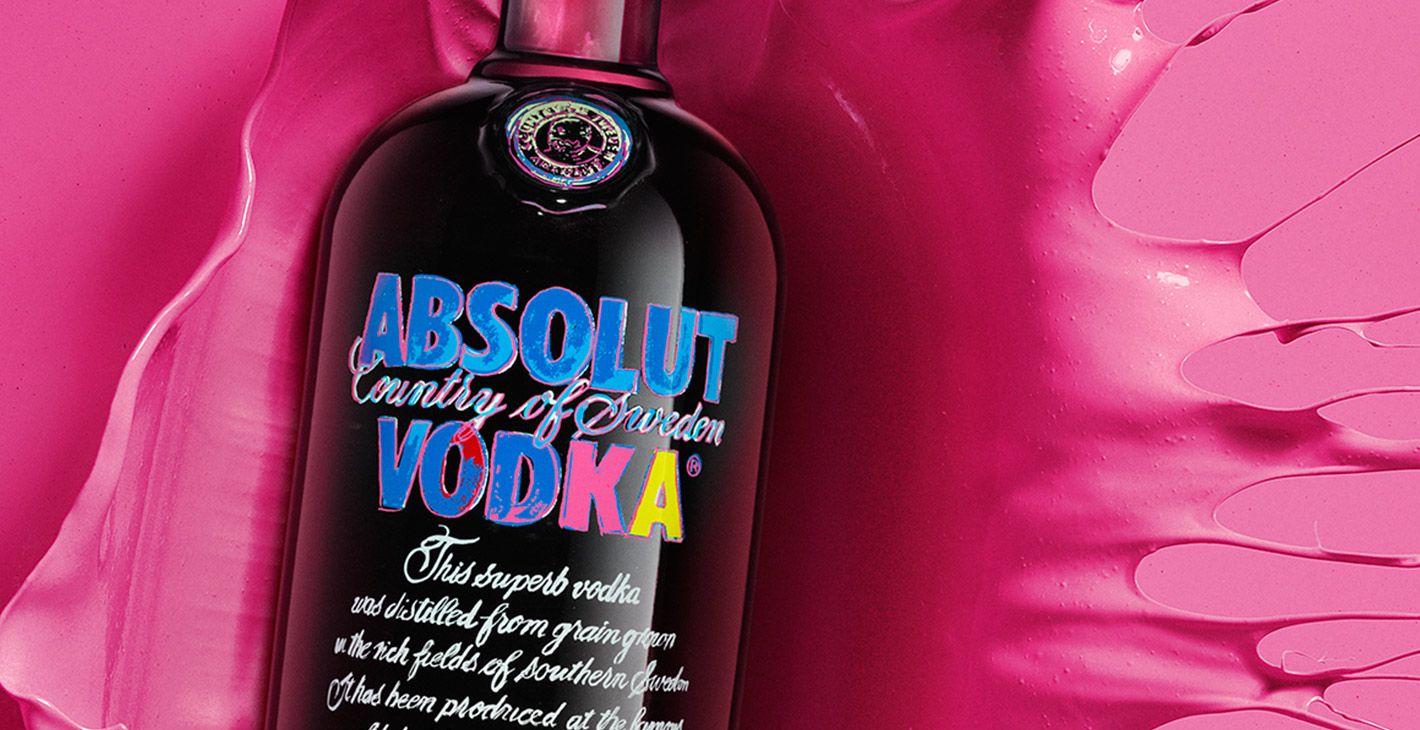
Absolut Vodka, the fifth largest spirit brand in the world, sells an incredible 11 million cases of vodka a year. But the really amazing part is that every single drop originates within a 75-mile radius of its distillery in Åhus, in southern Sweden. It’s a truly local operation on a global scale, the epitome of what lots of people are preaching these days about sustainability, purity, integrity, and local sourcing—not because it’s trendy, but because that’s how they’ve always done it. Since 2008, Absolut has been owned by France’s Pernod Ricard (the company paid a whopping $8.3 billion for the brand), but the change of hands didn't change the way things are done in Åhus.
The key to Absolut is the winter wheat grown in fields surrounding the distillery. In fact, 450 local farms are contracted to supply the hardy grain, which is planted in the autumn and actually benefits from the cold weather. Over a kilogram of wheat finds its way into every bottle after being mashed, fermented, distilled, rectified, and combined with pristine water from Absolut’s own well, a naturally-filtered aquifer. Absolut’s continuous distillation method is designed to produce an extremely pure spirit that still retains the fine character of the grain.

In 1979, Absolut created the premium vodka market and also revolutionized both bottle design and spirits advertising. It actually has much older roots, however, which goes some way towards explaining the relatively modest scale of its operation and “old fashioned” approach. The company was originally introduced in Sweden a hundred years before that as "Absolut rent branvin" ("Absolutely pure vodka”) by Lars Olsson Smith, famous entrepreneur and father of the brand—it's his profile on the label. Smith came up with a new method of distillation using rectification which allowed for a far superior purification of the spirit.
On a recent trip to Sweden and the heart of Absolut’s operation, we witnessed first-hand the way Absolut continues to make vodka in accordance with 400 years of tradition, just like it says on the famous label. The abundance of natural beauty in southern Sweden, and Åhus in particular, holds the key to the purity and integrity of the product, with the values and principles we’ve come to associate with Scandinavia. Absolut describes Åhus as “a single community where passion, pride and hard work transform local ingredients into the perfect vodka,” and after seeing it for ourselves we’re inclined to agree.

In a nutshell, when the grain from the wheat fields surrounding Åhus is delivered by the local farmers, the wheat is dried, ground, and the bran removed. Water is then added to remove the insoluble protein gluten and the mixture is boiled. After cooling, natural enzymes turn the starch into sugar. Then yeast is added and in this stage the sugar is converted to alcohol. The mixture is distilled and rectified, meaning it is purified of unwanted alcohol derivatives. Finally, pure spring water from the distillery’s own well is added, and then you have Absolut!
The iconic bottle was inspired by an 18th century Swedish apothecary bottle that the designers discovered in a Stockholm antique store. Absolut created the concept of putting premium spirits in clear bottles, now widely copied by other brands around the world. Many also attempt to mimic Absolut’s purity with various filtering processes, some of which cannot however disguise the essential unpleasantness of the base spirit. A blind taste test will usually unmask lesser spirits which rely more on their packaging than actual taste.

At the same time the company revolutionized the world of premium spirits, they also changed the way spirits were marketed. Helped along by the fact that Russian vodka had fallen out of favor with Americans, Absolut’s sales soon soared and have been on the rise globally ever since. The iconic bottle has even been given countless wardrobe changes over the years with the commissions of over 300 painters, as well as leading sculptors, glass designers, musicians, and fashion designers.
The important traditions to which Absolut holds true extend to other facets of life in southern Sweden that find expression in various things, like the way the local farmers have the freedom to produce wheat the old-fashioned way and earn a good living without fear that Absolut will start importing foreign ingredients. The local food, simply prepared using farm-grown fish, meat and vegetables—of which there is an abundance thanks to the healthy way the land has been cultivated—pairs perfectly with vodka.

In Sweden we not only saw Absolut in its natural environment in Åhus, but also in the stylish streets of Stockholm, one of our favorite cities in the world. Since its debut, and thanks also to its cachet as a cool brand, Absolut has played an important part in cocktail culture and by extension, fine dining, nightlife and cultural happenings. In Stockholm the brand maintains a “top secret” atelier located in a huge loft/nightclub converted from a former bank, where new ideas, collaborations and concepts are constantly evolving. While the Atelier is by invitation only, anyone can visit the The Museum of Spirits on the island of Djurgarden.
Housed in the city’s two remaining 18th-century naval buildings, the museum holds many iconic pieces from the brand's art collection, including one of the famous Andy Warhol paintings of an Absolut bottle, which was transformed into the cool new Absolut Andy Warhol Edition. Warhol was actually the first artist to create an original work of art for the spirit brand, paving the way for scores of famous creators to put their own spin on the iconic design.
The Museum of Spirits is a good place to start your Stockholm excursion—just make sure to end up somewhere that serves Absolut.











